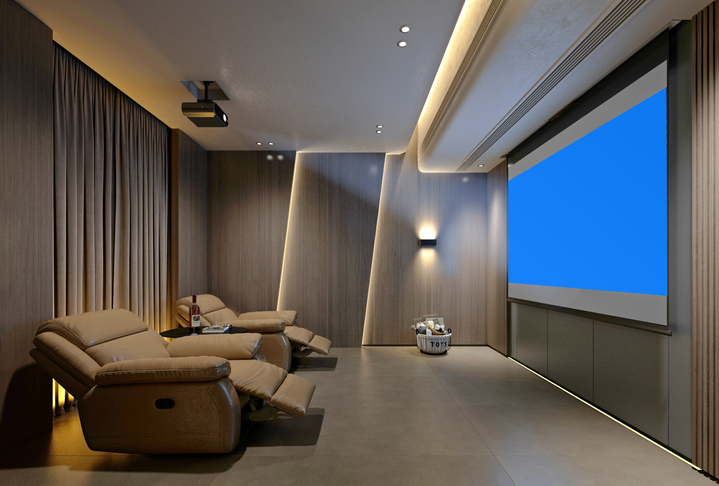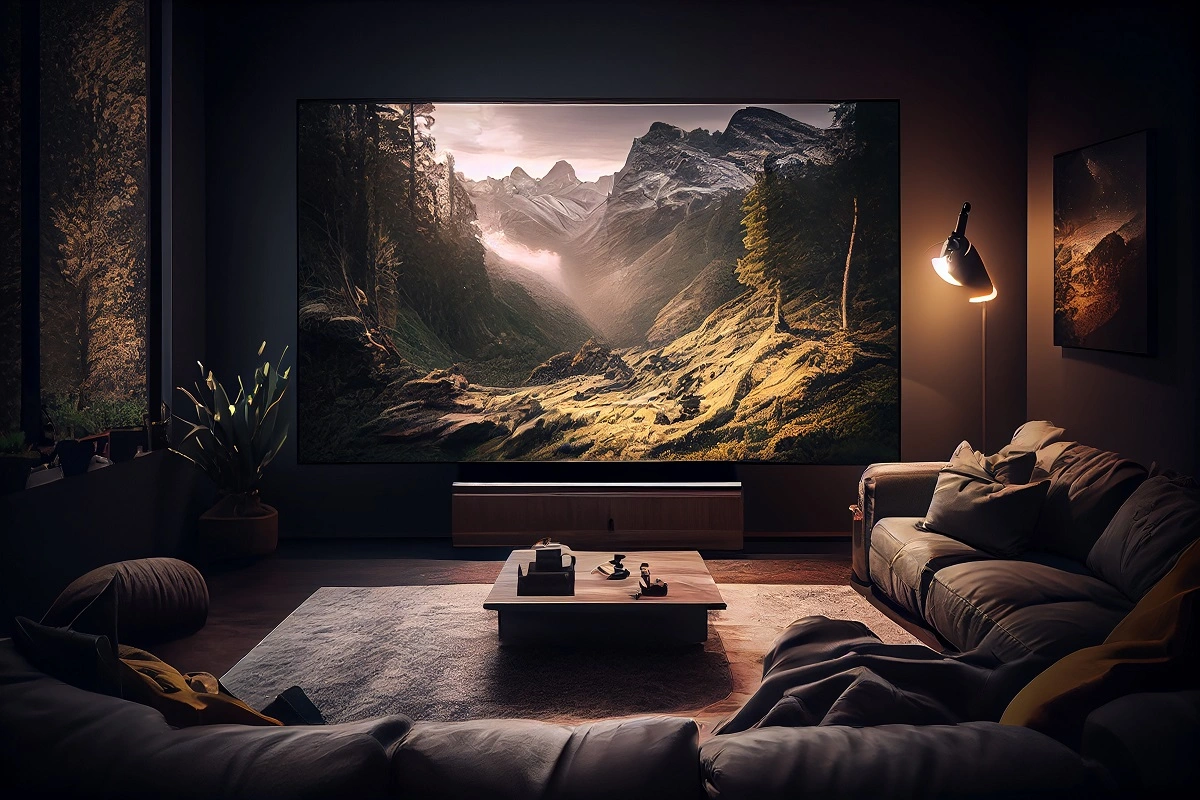Home Theater 101: Everything You Need to Know for a Cinematic Experience in your home
Developing a home movie theater that measures up to the motion picture experience of a business theatre entails mindful factor to consider of numerous components, including screen option, sound systems, and area design. Whether you are contemplating the perfect screen size or the intricacies of border noise, recognizing these principles is crucial.
Picking the Right Screen
When establishing up a home movie theater, choosing the right display can make or break the seeing experience - tampa home theater installation. The display works as the focal point of your configuration, influencing photo quality, watching angles, and total visual. Secret variables to consider consist of display resolution, dimension, and type
Initially, establish the proper screen size based on your space measurements and seating range. Next off, select in between numerous screen kinds, such as fixed-frame, mechanized, or retractable screens, each offering distinct benefits.
Resolution is an additional vital variable. For a really immersive experience, take into consideration a screen developed for 4K or perhaps 8K material, making certain sharpness and clearness. In addition, think about the display's gain, which affects brightness and contrast; a higher gain can improve illumination in well-lit spaces, while a lower gain may be better for darker environments.
Selecting Sound Equipment
Audio tools is a critical part of any kind of home cinema system, considerably improving the overall watching experience. The option of audio gear can determine the deepness, clarity, and immersion of sound, important for developing a cinematic environment.
When picking audio equipment, consider a surround audio system, which generally includes a receiver, numerous speakers, and a subwoofer. A 5.1 or 7.1 network system is recommended, where the first number represents the audio speakers and the second the subwoofer, offering an immersive soundscape. The receiver is the heart of the system, managing sound and video clip signals, and need to sustain modern-day styles like Dolby Atmos for an enhanced spatial experience.
Quality speakers are important; seek models that supply a well balanced sound profile with great bass action. Floor-standing audio speakers can produce richer sound, while shelf choices save room. Furthermore, consider cordless choices for ease of installment, although wired systems often deliver premium efficiency.

Ideal Seating Arrangements
Producing a suitable home theater experience hinges dramatically on optimum seating plans. The plan of seats plays a vital role in both convenience and watching quality, straight impacting the overall motion picture experience.
First, think about the display size and seeing range. An usual standard is to place seats at a distance approximately 1.5 to 2.5 times the angled dimension of the screen. This guarantees an immersive experience without straining the eyes.
Next, elevation is vital. If your seats is in a tiered format, the back rows ought to be higher than the front to avoid blockages. For level seating, ensure that the front row is not also near to the screen, and that every person has a clear line of sight.
Moreover, take into consideration the arrangement in regards to social dynamics. Team seats can boost the common experience, while specific seats may be favored for personal watching.

Finally, prioritize comfort with ergonomic seats that supports extensive viewing durations. Including recliners or supported seats can significantly check this site out enhance the experience, making the home theater a recommended destination for both enjoyment and relaxation.
Lighting and Setting
Efficient lights and atmosphere are necessary components of a well-designed Bonuses home movie theater, as they significantly affect the watching experience. The appropriate lights can enhance the cinematic feel, while poor options can take away from it. For optimal results, take into consideration a split lighting method that consists of ambient, job, and accent illumination.
Ambient lighting supplies general lighting, ensuring that the area is not entirely dark, which can stress the eyes. Dimmer switches are extremely suggested, permitting for adjustments based upon the material being watched. Job lighting, such as wall surface sconces or flooring lights, uses useful illumination for activities like reading or navigating the space without interfering with the total ambience.
Accent lighting can be used to highlight architectural attributes or develop prime focus, including depth and interest to the area. LED strip lights behind displays or along racks can give a refined radiance that boosts the aesthetic experience without frustrating the visitor.

Wiring and Installation Tips
A well-planned wiring arrangement is important for accomplishing optimum efficiency in your home theater system. Correct wiring not only guarantees click to investigate high-grade audio and video clip signals however also enhances the overall visual of your area. Begin by drawing up your layout, determining where each component will be put, including your screen, audio speakers, and receiver.
When selecting cords, focus on top quality, properly assessed circuitry to decrease signal loss. HDMI cables must be used for video connections, while audio speaker cable need to match the requirements of your speakers and amplifier. Choose in-wall rated cables to abide by security requirements and keep a clean look.

Conclusion
In summary, producing an outstanding home movie theater experience calls for careful consideration of different components, including screen choice, audio devices, seating plans, lighting, and circuitry. By prioritizing these variables, a motion picture atmosphere can be efficiently reproduced, allowing for immersive viewing experiences that equal typical theater settings.
Producing a home cinema that measures up to the motion picture experience of an industrial theatre involves careful factor to consider of numerous elements, including screen choice, audio systems, and room format.When setting up a home movie theater, choosing the best screen can make or break the seeing experience. Next, choose between various display kinds, such as fixed-frame, mechanized, or retractable screens, each offering unique advantages. For a genuinely immersive experience, consider a screen made for 4K or even 8K content, making sure intensity and clarity.In recap, producing an exceptional home cinema experience needs cautious consideration of numerous elements, including display choice, audio devices, seating plans, illumination, and electrical wiring.